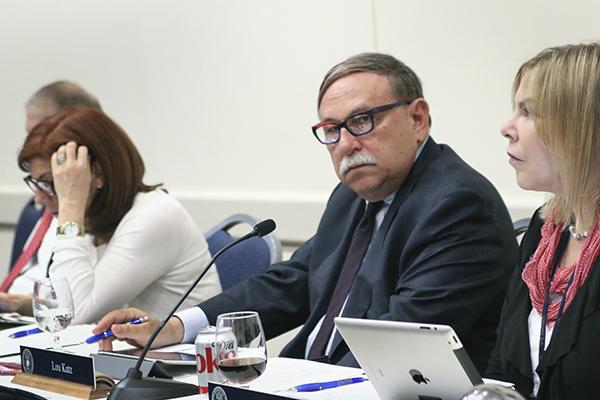With just months left in GW’s five-year plan to strengthen its finances, the University will have to complete more than half of its planned projects before the end of the calendar year to meet its own deadlines.
The University’s finance division, led by Deputy Executive Vice President and Treasurer Ann McCorvey, has been working through a five-year strategic plan since 2010 to make information more accessible to the public, streamline basic accounting processes like payroll and upgrade the systems that track the University’s investments. The plan is the first of its kind for the division and was made to keep track of its long-term goals, McCorvey said.
“A long-term plan allowed us to determine how to best apply our resources strategically to ensure the most important and impactful projects were envisioned and executed,” she said.
The document functions as a checklist for small and long-term projects. Officials split the plan’s goals into five parts, from making sure employees are paid correctly and on time, to setting up a system to automatically pay bills. The plan also includes writing financial reports that are understandable to the public, improving the way officials track investments and making the way they track daily spending more efficient.
The plan, which officials started working on in 2010, also breaks down each part with more specific projects. Of the 30 specific projects the plan outlines, only five have been completed, and 14 of them have yet to be started, according to the division’s website. All of the projects have deadlines at the end of this calendar year.
McCorvey said leaders in the finance division worked with other members of the office to work out the plan. She said most of the plan’s projects include upgrading technology.
“The process allowed and encouraged the teams to engage their main stakeholders throughout the university community to determine these priorities,” she said.
Jennifer Delaney, an assistant professor in education policy at the University of Illinois, said a plan specifically for a finance department could help officials cut excess costs on the business side of the institution.
“Lots of universities are trying to be more efficient administratively,” she said. “If you can process your financial system in a more automated way where you need fewer employees, that could actually lead to some real cost saving in terms of the administration of the institution.”
University President Steven Knapp announced in March that all administrative departments at the University would see a 5 percent budget cut following a drop-off in graduate enrollment.
Delaney said cutting costs in areas outside the classroom is most beneficial to students because officials can keep high-quality faculty and make cuts in other areas.
“You don’t necessarily want to take away spending on instruction or on faculty, but if you can streamline your central administration, that can actually free up funds for other uses in your institution,” she said.
The University has also taken steps to adjust its financial reporting, like reworking the way students’ tuition dollars fund their professors’ salaries for this fiscal year.
Richard Vedder, the director of the Center for College Affordability and Productivity, said not many colleges have plans centered around its financial practices. But he said the plan’s goals to provide more transparency in how it accounts for costs and revenues is “highly desirable.”
Vedder added that universities have a reputation for remaining quiet about its finances, but a plan can help keep the University’s methods for tracking its money more open.
“Universities are in the knowledge business, but they certainly don’t spread much knowledge about themselves,” he said.







